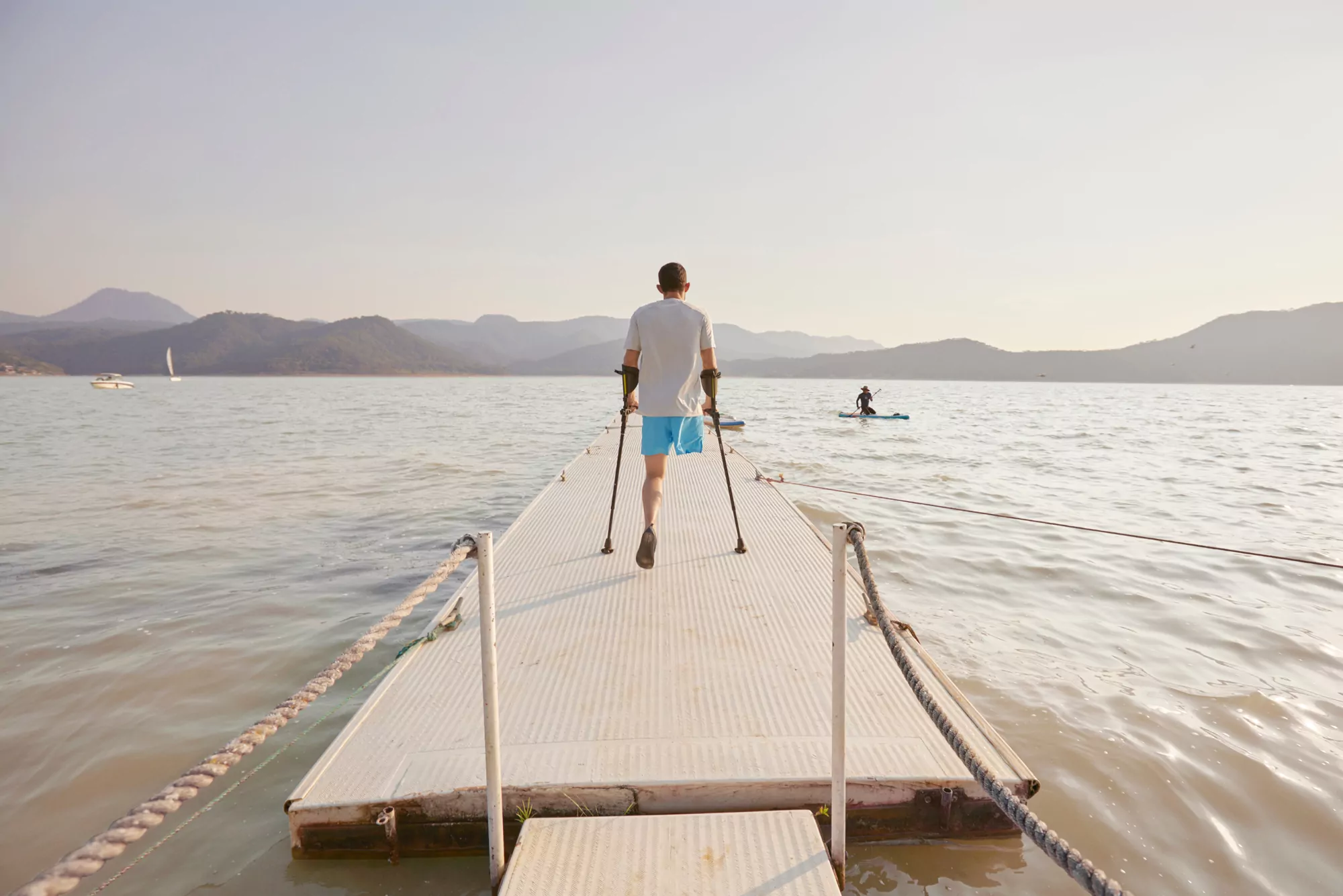Few experiences are as enriching and inspiring as hopping on a plane or boat, or into a car to explore a new destination. Whether you plan to connect with family, explore a new culture, or simply take much-deserved time to yourself, travel is a gift everyone should experience as often as they can.
If you’re a person living with a physical or cognitive disability you may wonder if travel is right for you and how you can make the most of it. While there’s still plenty of work to do, the travel industry is more accessible than ever. This accessible travel guide seeks to help those living with a disability better manage the complexities of travel, from navigating airports to boarding planes to finding destinations and hotels that prioritize guests with disabilities so you can enjoy travel on your own terms.
Consult with Your Doctor
Doctors aren’t just a resource for managing your day-to-day life, they are also a wealth of information on how to travel safely and enjoyably. They can prescribe extra medication, help prepare necessary medical documentation, and warn you of any potential risks while traveling. They could also suggest vaccinations and other preventative care that can help protect you when going somewhere new for the first time.
Note that the U.S. Transportation Security Administration (TSA) allows an “unlimited” number of pills or medications in solid form when flying on a plane. And if you prefer your medication or medical equipment not to be X-rayed at security checkpoints, you can request inspection by hand. You may want to ask your doctor if any of your medications or devices require this provision.
Research Existing Accommodations
This is especially important for international travel. While U.S. hotels, airports, and public spaces are required to be ADA compliant, international destinations may not have the equivalent, depending on where you go.
Domestic historic sites and structures are not exempt from Americans with Disabilities Act of 1990 (ADA) compliance. Depending on how old a historic location is and the condition it is in, accessibility may be lacking. If you plan on traveling to historic sites in Europe and Asia, reach out to local U.S. embassies to see if they can access the information you need to determine whether an attraction is accessible based on your needs.
Call (or Click) Ahead
From the airline to locations you’ll visit when traveling, reaching out online or over the phone to connect with agencies and organizations ahead of time can go a long way. When flying domestically, this can mean arranging concierge service at the airport or assistance to help you check in medical devices ahead of time. The TSA has a toll-free number you can call to inquire about procedures specific to your needs.
Some popular tourist attractions at your destination may have assistive devices and equipment available for purchase or for free. For the vision and hearing impaired, braille guides or special audio equipment may be available. For those with physical disabilities, motorized scooters or wheelchairs may be provided. Sometimes supplies of these materials are limited, so even if you can’t reserve them formally, simply speaking to someone on location beforehand may ensure they are there for you when you arrive. The TSA’s active Twitter account is also a great forum for questions and source of information.
Keep Important Documents on You
Make sure that medication bottles are clearly marked. Consider completing a TSA Disability Notification Card and carrying it on your person while in the airport. While formal documentation of a recognized condition is rarely required, it may help you better communicate your needs.
The ADA permits service animals to accompany their handler wherever general members of the public are allowed to go. In the U.S., those working at a place of business or other public space are not permitted to ask whether yours is a service animal or demand documents as proof. However, recently amended guidelines do permit airlines to request formal documentation. Some examples of documentation include: U.S. Department of Transportation Service Animal Air Transportation Health Form, U.S. Department of Transportation Service Animal Air Transportation Behavior and Training Attestation Form, or U.S. Department of Transportation Service Animal Relief Attestation.
Emotional support animals, while broadly permitted on airplanes and in public spaces, often require formal registration and accompanying documentation. Airlines can require a minimum of 48 hours’ notice that you’ll be boarding with an emotional support animal and can ask for what’s commonly called an ESA letter as documentation.
Look Into Traveler’s Insurance
For those traveling internationally, traveler’s insurance with medical coverage is available to those with physical and cognitive disabilities. However, coverage may be dependent on whether your temporary or permanent disability is considered a pre-existing condition and could require a waiver for overseas coverage.
If your condition puts you at risk for medical evacuation, consider medical evacuation traveler’s insurance. Medical evacuation traveler’s insurance can help cover costs if an emergency happens while traveling out-of-network domestically or internationally. If you require the support of a loved one in the event of an emergency, coverage can also include their travel, lodging, and meal costs.
Pick an Accommodating Destination
It may surprise you to learn that some of America’s most popular tourist spots are also accessible travel destinations! These include Las Vegas, Nevada. Las Vegas’s shows and casinos are all wheelchair accessible. And because Vegas is flat, many of its free attractions, like the Fountains of Bellagio and the Fremont Street Experience with its concerts, historic sites, and unforgettable light shows, are all easily accessible too! Vegas also has extensive public transportation and a wheelchair-friendly taxi system serving nearly all corners of the city.
Other domestic travel destinations known for their accessibility include Orlando, Florida and the one and only New York City! Some international locations with a reputation for accessibility include Barcelona, Spain, and Melbourne, Australia. Cruises of all types to all destinations are also widely considered to be accessible travel options for those living with a disability.
Find Accessible Places to Stay
Research your overnight options thoroughly. While all U.S. hotels are required to meet minimum ADA disability standards, some have gone above and beyond. Be sure to ask for ground-level accommodations or for those near an elevator if you need them.
The ADA requires that any hotel with over 50 rooms is required to have at least one roll-in shower, complete with an attached, fold-down seat. Ask if your shower has a detachable, hand-held showerhead and about the number of beds in the room. Those with a roll-in shower should have two beds for those who travel with medical personnel.


